Wu Tsang’s Moby Dick; or, The Whale Italian premiere at Teatro Goldoni

The seemingly interminable wait for the Italian premiere of Wu Tsang’s newest silent film — written by Sophia Al Maria and directed by Tsang — was worth every minute. At the Goldoni Theater, we attended the screening of this film adaptation of Herman Melville’s Moby Dick, presented with live orchestral accompaniment. Alternating moments of narrative with pure visual immersion, the film — shot entirely on a soundstage that combines silent film techniques with a VR game engine that projects surreal ocean environments — turns the vision of this well-known American novel on its head by exploring overlapping stories of extractivism, colonialism, and ecological and spiritual crisis. “Not you, Not me,” goes the unforgettable refrain of this outstanding production.
“PLANET B, Climate Change and the New Sublime” Palazzo Bollani

Among the more interesting side events during the Biennale is this three-part exhibition curated by Nicolas Bourriaud at Palazzo Bollani, which marks the beginning of “Radicants,” the first cultural cooperative platform founded by the critic and curator.
“PLANET B, Climate Change and the New Sublime” is the result of years of research on the molecular turn that Bourriaud had already explored in the exhibition “Crash Test” (Mo.Co Montpellier, 2017). The three acts of the exhibition in Venice reflect on the impact that climate change has had on the visual arts, filtered through philosopher Edmund Burke’s notion of the sublime — in this case the dark side of transcendence, caused by a reality in profound mutation.
THE SOUL EXPANDING OCEAN #4: Diana Policarpo Ocean Space
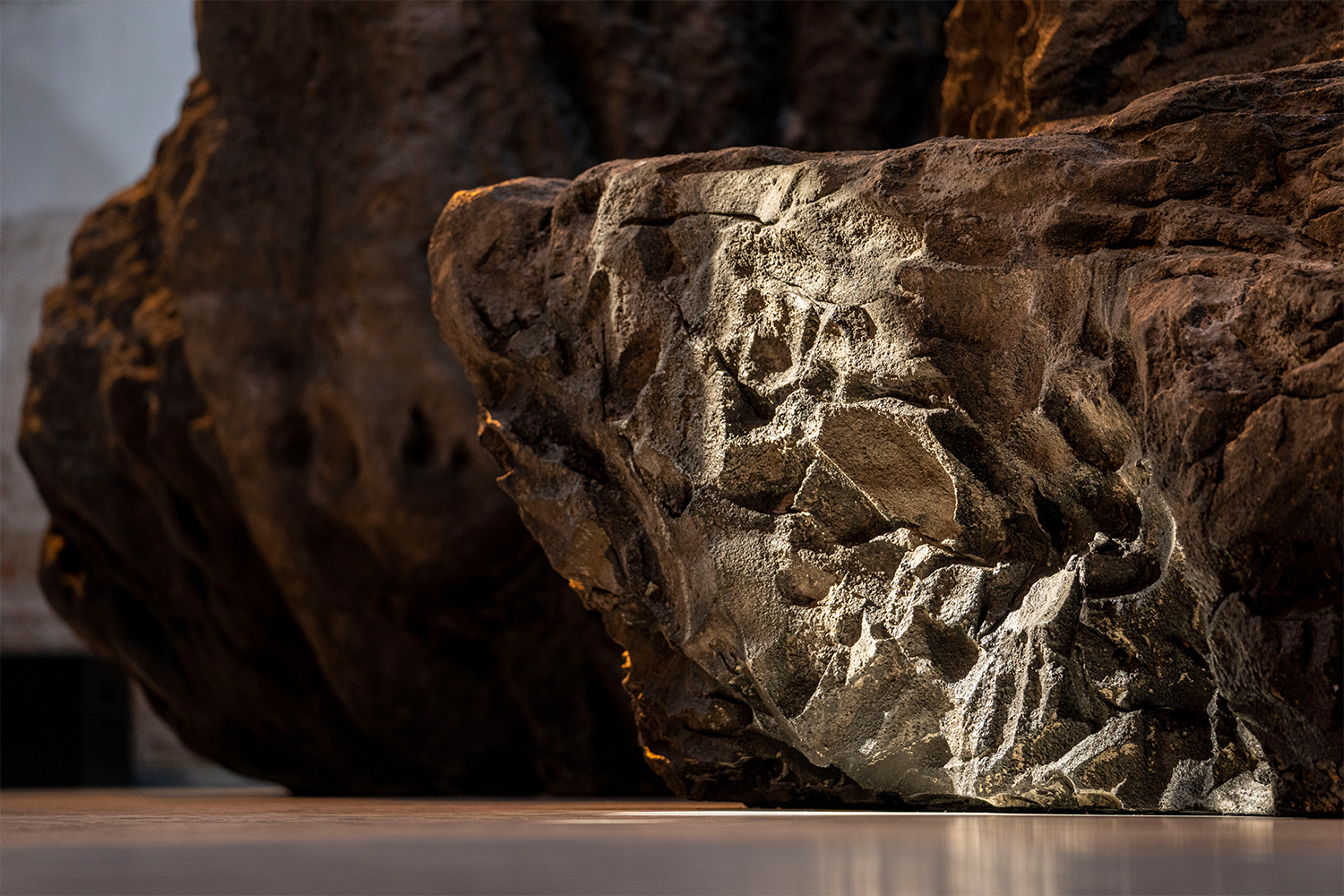
For the biennial exhibition cycle curated for Ocean Space, in collaboration with TBA21-Academy, Moderna Gulbenkpian (CAM), and the Moderna Gulbenkian Institute Cieëncia Centro de Arte, Chus Martínez presents the work of Diana Policarpo: a multimedia installation of video and audio and a large-scale sculptural reproduction of the Portuguese Wild Islands. Embedded in the islands we find small screens with videos shot by cameras able to capture the activities of living beings that the human eye cannot perceive. Always innovative, Martínez’s curatorial cycle succeeds in opening up powerful reflections via otherwise inaccessible perspectives.
“Penumbra” Fondazione In Between Art Film Complesso dell’Ospedaletto

Beatrice Bulgari’s In Between Art Film Foundation, under the curatorial direction of Alessandro Rabottini, presents its first institutional exhibition at the Ospedaletto and the Church of Santa Maria dei Derelitti. Entitled “Penumbra,” the exhibition — with the double curatorship of Rabottini and Leonardo Bigazzi — includes eight new productions commissioned for the occasion from artists Karimah Ashadu, Jonathas de Andrade, Aziz Hazara, He Xiangyu, Masbedo, James Richards, Emilija Škarnulytė, and Ana Vaz. The group show intends to investigate the exhibition methods of moving images, and to provide a diverse cross-section of the many approaches to time-based media on the national and international scenes. The exhibition display, designed by Ippolito Pestellini Laparelli with his studio 2050+, takes advantage of the rarefied atmosphere of Venice, dialoguing with the charged architecture of the space.
Marlene Dumas “open-end” Palazzo Grassi
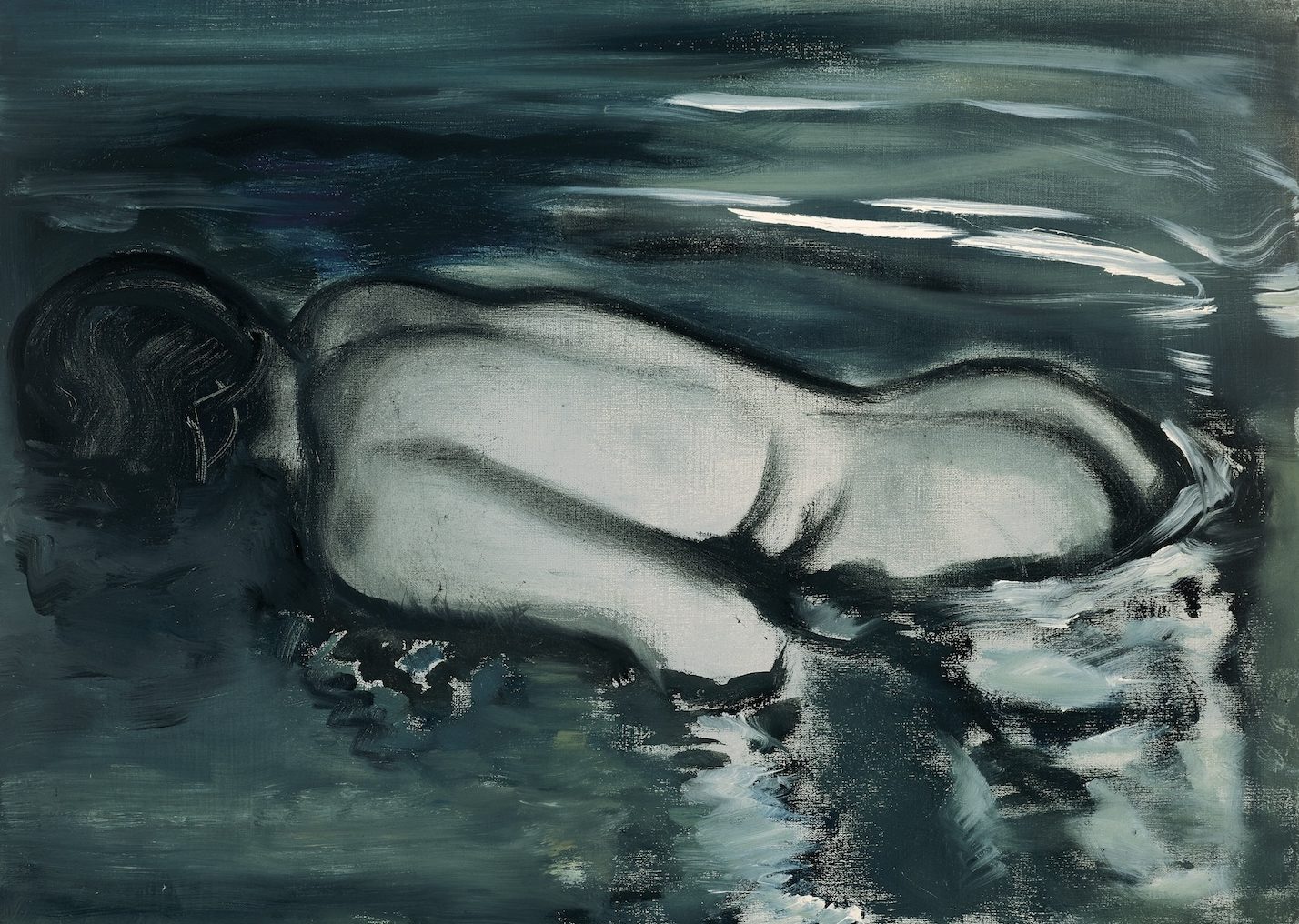
Palazzo Grassi celebrates the career of South African artist Marlene Dumas. More than one hundred works on display, from 1984 to the present day, with previously unpublished works from the Pinault Collection and from institutional and private loans, comprehensively represent the artist’s pictorial research. The survey includes a range of formats and media, including experiments with collage and text, oil on canvas, and ink on paper. All highlight Dumas’s almost perverse attention to detail and her maniacal use of pigments that blend into loose yet exacting contours of faces and bodies. Racial or gender issues alternate with bodily details that release an eroticism intrinsically linked to the use of color.
“Human Brains” Fondazione Prada
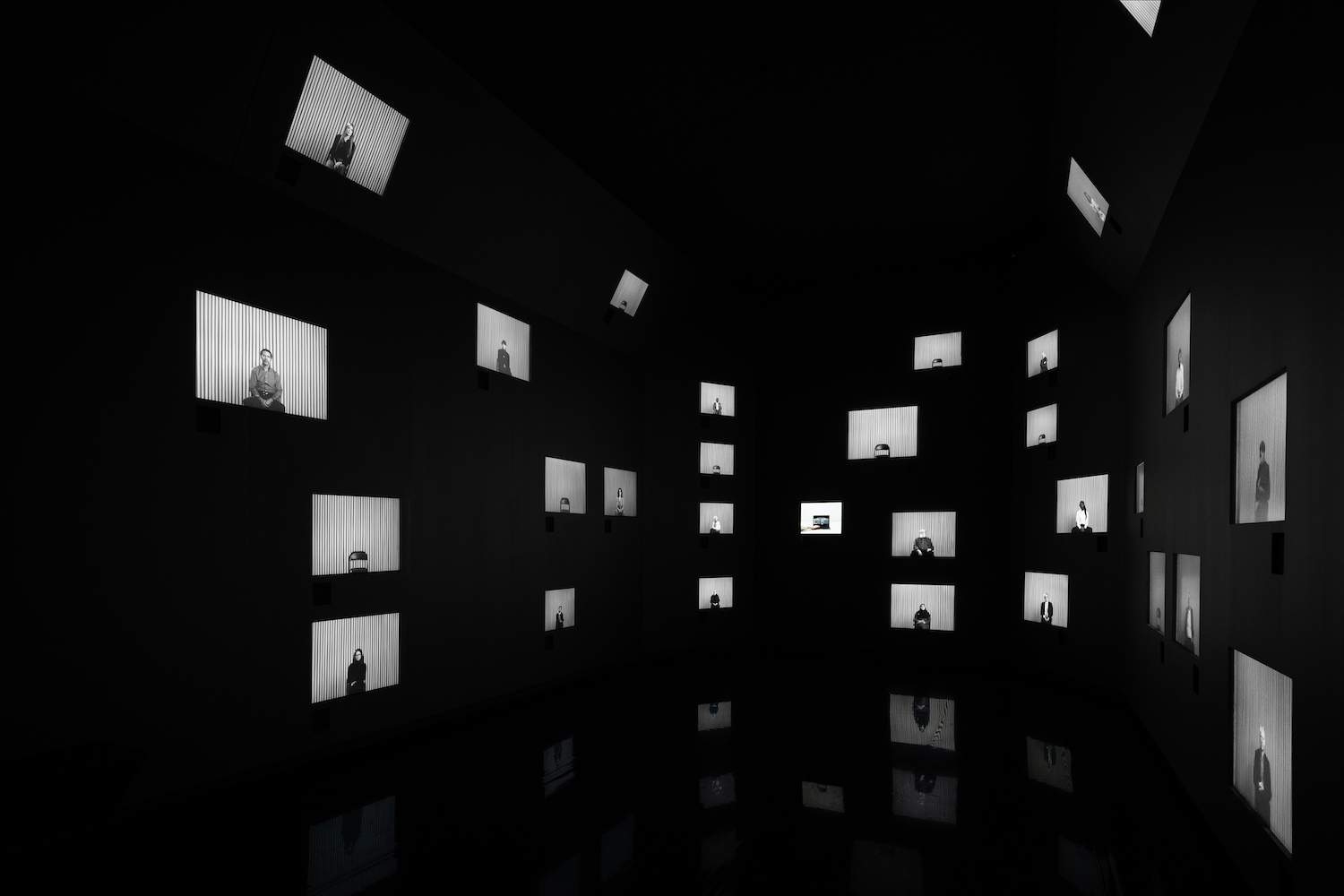
Each individual is a unique and complex entity, and the human brain, no matter how thoroughly explored, remains mysterious. Memories accumulate in the brain, are modified, altered, adapted, invested with new meaning. The desire to understand the origin and function of the seat of our thought is a constant in the history of mankind, as well as in “Human Brains,” an ambitious research project Fondazione Prada began in 2018. This first physical manifestation of that project, with its perfectly apt design, traces the birth and development of neuroscientific knowledge through video projections that introduce the observer to mysteries and objects dating back to every geological era. The result is a multifaceted and unprecedented journey through the history of our understanding of the human mind.
Ugo Rondinone “burn shine fly” Scuola Grande di San Giovanni Evangelista

With two bodies of previously unpublished works and the sculpture the sun II (2018), Ugo Rondinone occupies the Scuola Grande di San Giovanni Evangelista, naturally inserting himself into a place that oozes with history. Crossing the courtyard, in which the monumental sun stands out in gilded bronze, we find new productions by the artist, conceived for the occasion with the support of Eva Presenhuber, Esther Schipper, Sadie Coles HQ, Gladstone, Kamel Mennour, and Kukje Gallery. Seven bodies camouflaged in cloudy skies hang from the ceiling, mimicking the vaulting of dancing bodies (from which the artist has made casts); meanwhile a series of still life candles placed on the floor is intimate and more restrained: although contingent, they lead the viewer to consider the condition of imperfect eternity to which Rondinone’s work is destined.
Kunsthaus Bregenz in Venice: Otobong Nkanga, Anna Boghiguian Scuola di San Pasquale in Campo San Francesco della Vigna
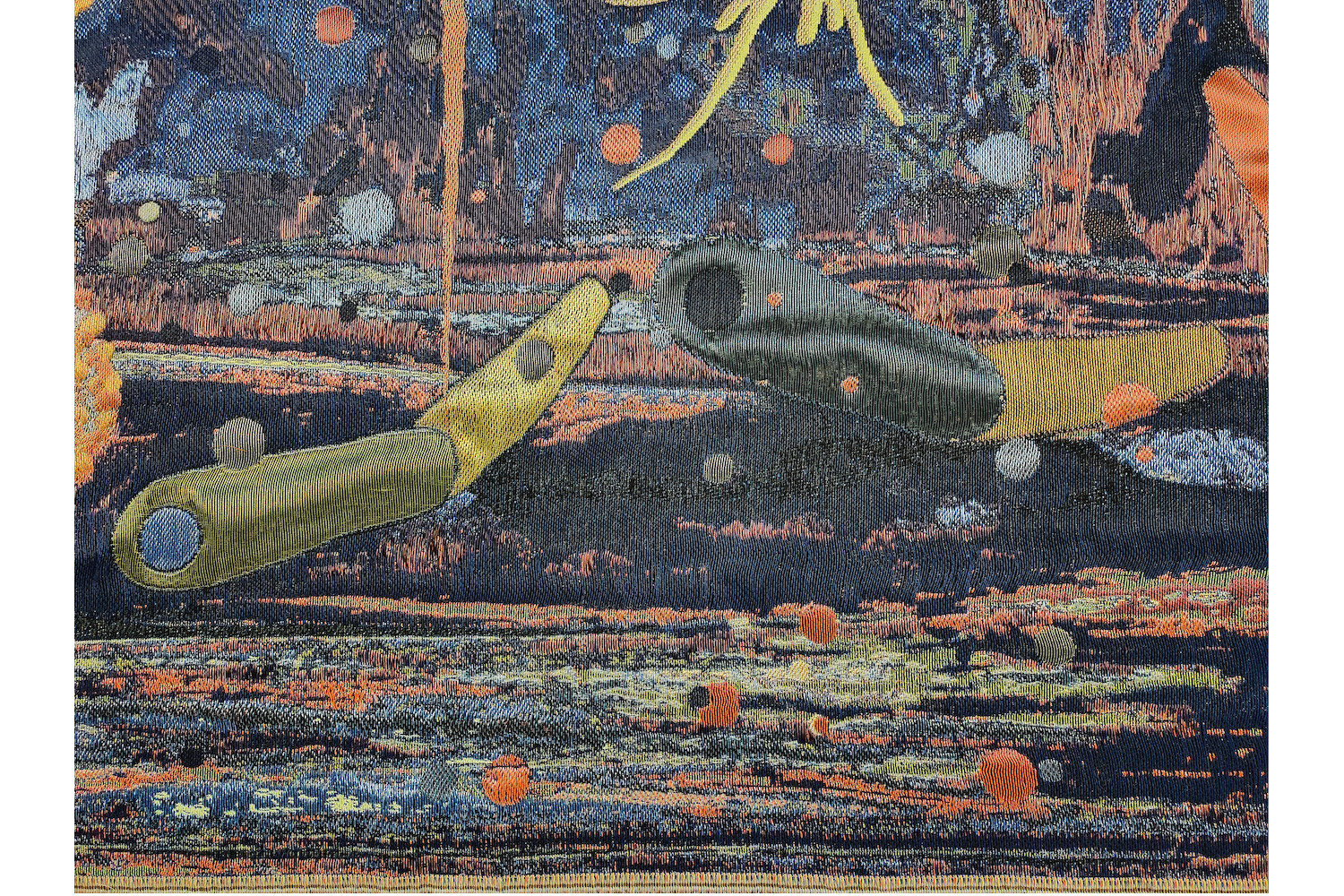
The cuboidal space and light of the seventeenth-century Scuola di San Pasquale suggests a parallelism with the architecture of the Kunsthaus Bregenz. Tied to the Other Side, a blue tapestry by Otobong Nkanga, is located on the ground floor of the Scuola, and was made on a Dornier weaving machine at the TextielMuseum in Tilburg, Holland, according to the artist’s working drawings of the nonvisible and intangible. On the first floor we find historical figures on cardboard by Anna Boghiguian, assembled in an oversized game of chess. Through set in Venice, the exhibition offers a remarkable glimpse of the curatorial and exhibition research being undertaken at Kunsthaus Bregenz.
Katharina Grosse “Apollo, Apollo” Espace Louis Vuitton
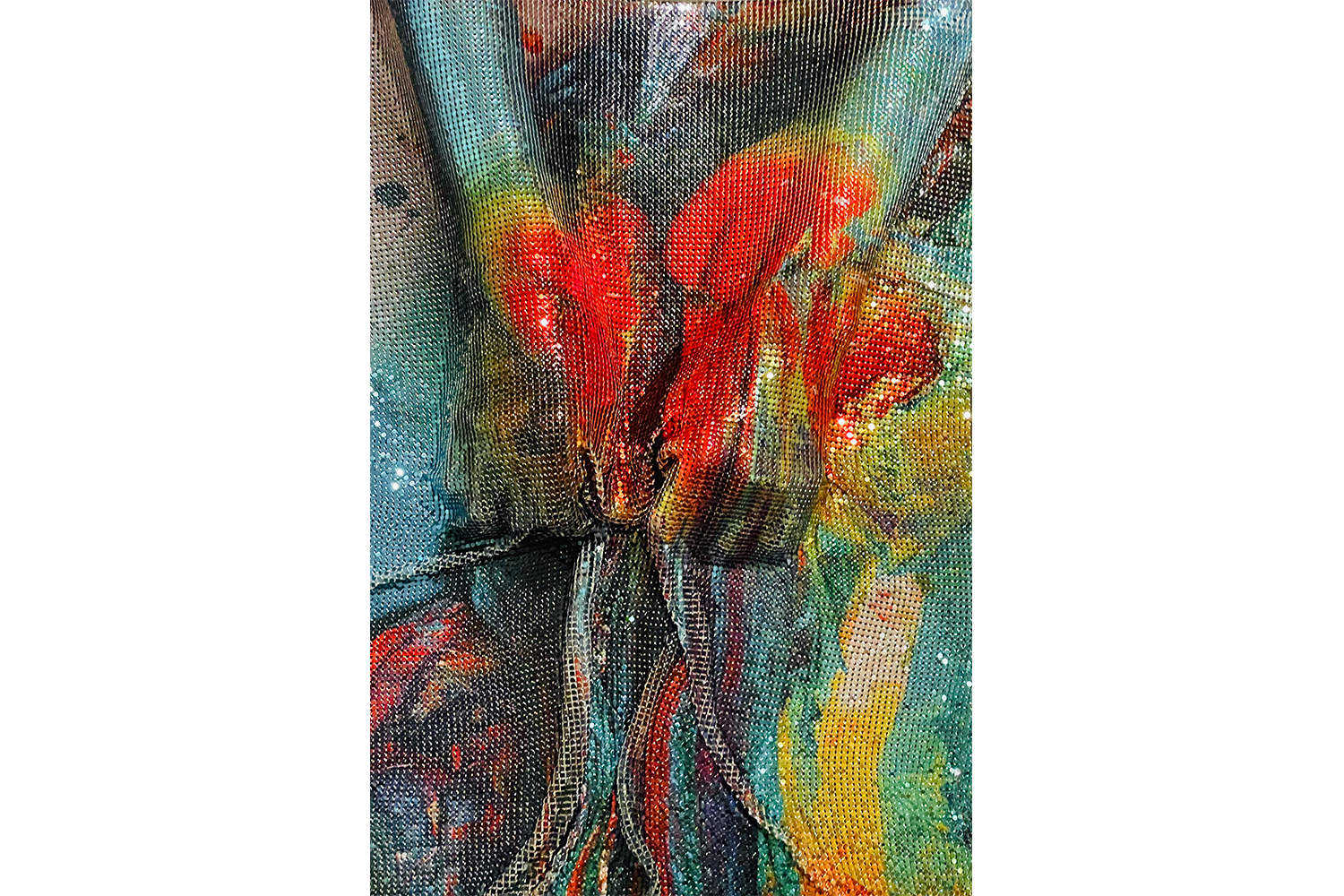
For the first time, among the collateral events of the Biennale, the artist experiments with a new material: a metallic mesh fabric. Grosse explores the metallic fluidity and chromatic intensity of this sculpture-fabric within a darkened space, a black box. With the polysemic title Apollo, Apollo, the sculpture features a composite image of the artist’s hands printed on the metallic substrate, depicting the moment when the boundaries between Grosse’s body and the material dissolve in the act of creation.
Pauline Curnier Casa di Reclusione Femminile della Giudecca
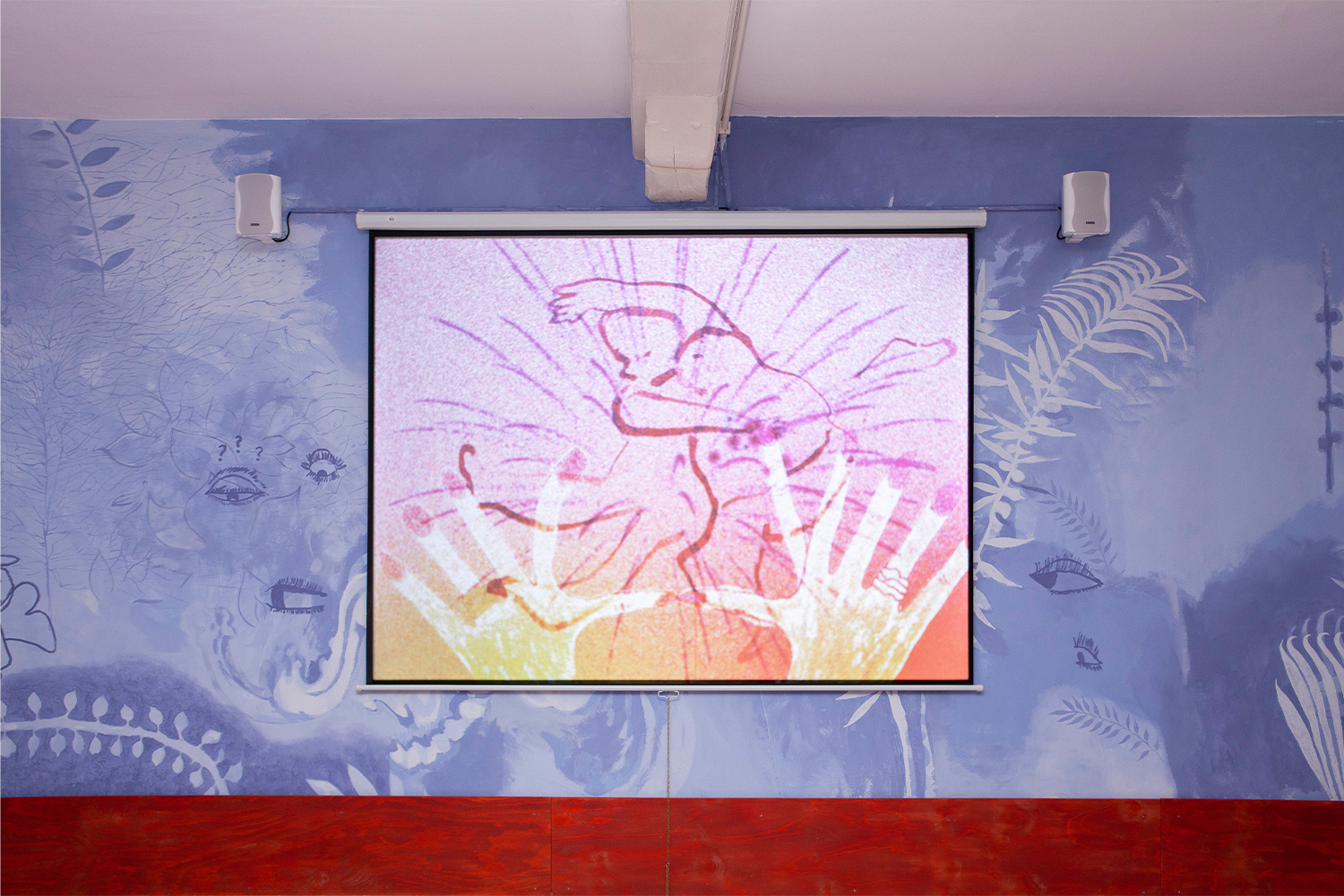
Pauline Curnier Jardin’s installation at the Casa della reclusione femminile della Giudecca, Venice, is one of two acts of Francesco Urbano Ragazzi’s exhibition project “Something Out of It.” The women’s prison is located inside the old convent of the Convertite; during the fifteenth and sixteenth centuries these nuns used to put on shows for the city’s most important families, during which they wore scandalous and profane clothes. The stage for such performances was the parlor, which now houses Curnier Jardin’s installation, created together with the sixty intimates of the prison. Furniture, wall paintings, and a video installation, Adoration (2022), transform the usually secluded and isolated space into a place of ritual meetings.
